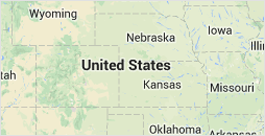Daniel Stewart
PHONE NUMBER : ------------
Map

3 Ways to Encourage People to Sign Up For Health Insurance
Healthcare will always be a hot-button topic. It's a constant point of debate in Congress. But as healthcare costs continue to climb, Americans need solutions.
Unfortunately, healthcare adverse selection is a real problem that plagues this country. This phenomenon refers to people waiting to get health insurance until they need it. There are many reasons why people are hesitant to enroll, so how can we encourage more people to sign up and get the coverage they need? Here are a few ideas.
More Consumer Assistance
Let's face it: Enrolling in a suitable healthcare plan isn't easy. It's confusing, and there are many barriers to entry that people simply don't understand. A lack of knowledge is one of the biggest reasons Americans don't bother enrolling.
Consumer assistance programs could be game-changing. Investing in these programs could open up the floodgates. Assisters can walk people through the process and even partially complete forms. When someone is actively helping throughout the enrollment process, participation numbers typically go up.
It's especially helpful for those who lose insurance plans due to changes in employment. Job loss is hard, and navigating the health insurance world alone is daunting.
Automatic Enrollment
Another way to avoid the entry barrier of administrative complexity is to allow for automatic enrollment. Current eligibility rules make it difficult for states to explore automated processes. Agencies also lack the resources needed to develop initiatives.
With proper funding and legislative changes, states can explore avenues to streamline enrollment. Automation alone could dramatically improve enrollment rates by simplifying consumer-facing logistics. Limiting administrative duties to simple decision-making removes barriers and makes signing up more accessible.
Better Income Rules
One of the biggest reasons for healthcare adverse selection is perceived affordability. The Affordable Care Act introduced premium tax credits for low- and middle-income households. It was a game-changer that made getting insurance more affordable.
But, there is some confusion over eligibility. Currently, tax credits are projected based on the income a person will make in the same year they enroll. But changes to employment could lead to reconciliation, lower eligibility than needed, and other hurdles. Basing credit eligibility on the previous years' income information would solve many of those obstacles.
Author Resource:-
Daniel Stewart has been helping people with their money management and personal finance with over 15 years' experience in business finance. You can find his thoughts at HSA investment advice blog.
